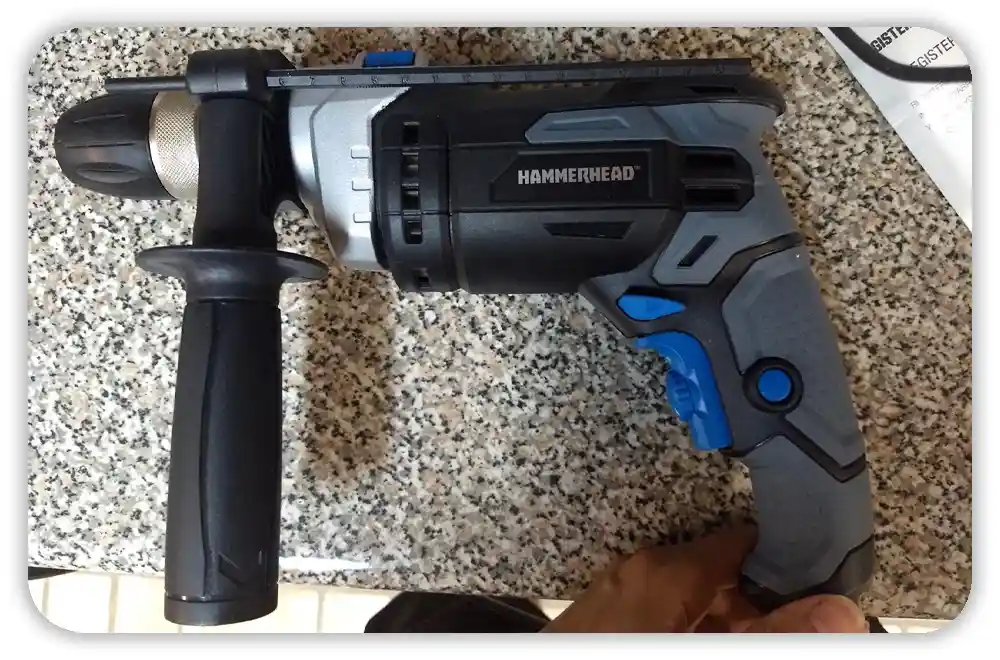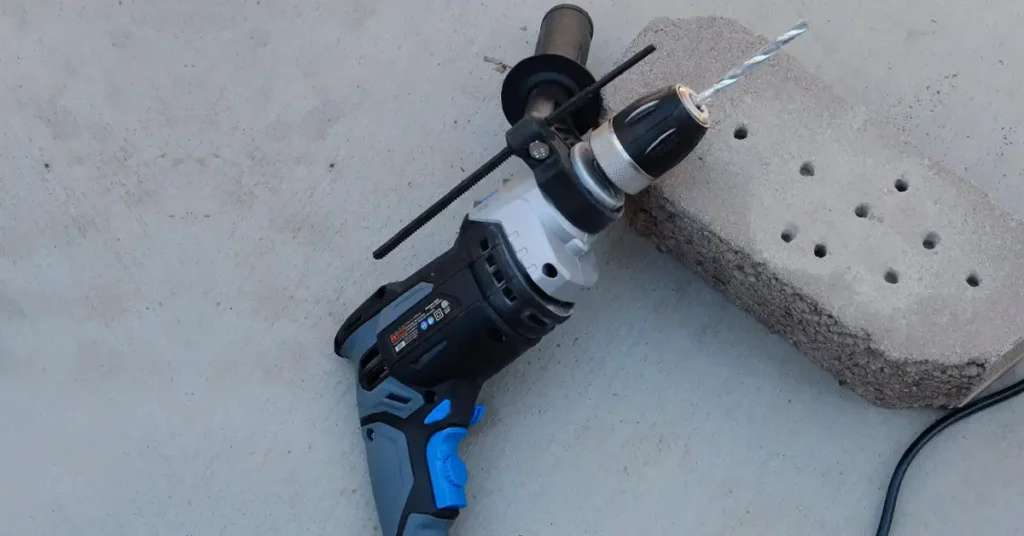I still remember the morning my BOSCH GBH 2-26 hammer drill quit on me. It was a cold Saturday in my garage. I was halfway through a concrete wall when it just stopped hammering. The bit kept spinning, but there was no punch.
The motor sounded fine — just lost its fight. Instead of tossing it aside, I decided to fix it myself.
Here’s what I learned the hard way — and how you can bring your own hammer drill back to life.
Table of Contents
Why Hammer Drills Stop Working
Before grabbing a screwdriver, it helps to know what you’re up against. Over the years, I’ve had my DeWalt, Milwaukee, and this BOSCH GBH 2-26 act up for different reasons.

Here’s what I’ve seen most:
- Overheating after long jobs in concrete
- Dust clogging vents or the trigger
- Worn-out brushes cutting power
- Jammed clutch killing the hammer action
- Loose chuck or cracked gearbox housing
One time, after a week of drilling Tapcon anchors in my garage, my BOSCH drill stopped hammering halfway through a hole. I smelled hot oil before I even let go of the trigger. That burnt smell told me something was stuck inside. When I opened it up, I found the clutch packed with old, brown grease that looked like peanut butter.
Safety First — Before You Pop It Open
It’s tempting to dive right in, but safety comes first. Power tools don’t forgive mistakes.
Unplug the drill or pull the battery before touching anything. I always wear gloves and glasses, even for quick fixes. A small box fan in my garage keeps dust out of my face.
If you live somewhere humid — like Florida or Louisiana — moisture can rust metal fast. I keep silica gel packs near my tools. They work better than you’d think.
The Tools You’ll Actually Need
You don’t need a fancy setup for this repair. I fixed mine right on my old workbench.

Here’s what I used:
- Small screwdriver set
- Needle-nose pliers
- Pick tool for clips and springs
- Multimeter for the trigger switch
- Shop towel and isopropyl alcohol
- Fresh BOSCH hammer grease
- New carbon brushes
And one small tip — keep a magnetic tray close by. Those tiny screws love to run away.
Step 1 — Check Power and Switch First
If your drill doesn’t start, don’t panic. Start simple.
I once tore apart a Craftsman drill for thirty minutes before finding a small cut in the power cord. Lesson learned.
Try another outlet or swap the battery if it’s cordless. If power’s fine, check the trigger switch with a multimeter. Sometimes dust or carbon buildup causes weak contact. A little spray of contact cleaner can bring it back fast.
Step 2 — Open the Drill and Check the Brushes
If your drill runs but feels weak, the carbon brushes are your next stop.
Unscrew the housing on your BOSCH GBH 2-26 and open it slowly — the wires like to hide. Inside, look for two small, spring-loaded blocks touching the motor. Those are the brushes.
Mine were short and shiny, which meant they were done. I caught that burnt, metallic smell — kind of like ozone after lightning. Replacing them took minutes and made a big difference.
Clean the inside with a towel and alcohol. It’s wild how much dust collects there.
Step 3 — Fix the Hammer Mechanism
If it spins but won’t hammer, the problem’s deeper — inside the gearbox.
When I opened my BOSCH, I found old, stiff grease and a stuck striker piston. It looked like dried peanut butter. I cleaned it all with alcohol and added a thin coat of fresh BOSCH grease.
Check the clutch, striker, and O-rings. If any parts look shiny, cracked, or flat, replace them. Hardened O-rings can kill the hammer motion fast.
Once, I even found a missing gear in a used drill I bought at a flea market. It spun great… but never hammered. Lesson learned.
Step 4 — Reassemble and Test
Now comes the fun part — putting it back together.
Reinstall the brushes, seat the armature, and close the housing gently. Make sure the wires sit in their grooves so nothing gets pinched. Tighten the screws snugly — not too hard.
When I plugged mine in, that first “thump-thump” in hammer mode made me grin. You’ll know it’s right when it sounds crisp, not gritty.
Keep It Running Longer

Once fixed, treat it better than before. Here’s what keeps mine running smooth:
- Blow out dust after each use
- Add a dab of grease to the SDS bit
- Don’t push too hard — let it work
- Store upright in a dry, cool place
In colder U.S. states, like Minnesota or Wisconsin, grease can stiffen in winter. I keep my drill inside the house instead of the shed — it starts smoother that way.
When It’s Time to Call a Pro
Not every repair is worth chasing. If your BOSCH GBH 2-26 smokes, smells like burnt plastic, or makes grinding noises, stop right there.
That usually means bad bearings or a fried motor. A BOSCH service center or local repair shop has the tools to test and replace those parts.
I’ve done plenty of DIY fixes, but when it gets electrical — I’d rather not risk the fireworks.
Fixing Feels Good
Repairing a hammer drill isn’t just about saving money. It’s about that moment when you hear it roar again and think, “Yep, I fixed that.”
Sure, you’ll get some grease on your hands and maybe drop a few screws. But when that hammer mode kicks back in, it feels worth every second.
So next time your BOSCH GBH 2-26 hammer drill gives up mid-job, take a breath, grab your tools, and give it a shot. You might surprise yourself — and your drill.
FAQs for How to Repair a Hammer Drill
Why won’t my BOSCH GBH 2-26 hammer drill start?
It’s often a worn switch or carbon brush. Check the power cord first — mine had a loose plug that stopped the motor cold.
How do I replace the brushes on my BOSCH GBH 2-26?
Unplug it, open the back cover, and pop out the old brushes. I used OEM parts — cheap ones wore out too fast.
Why does my BOSCH GBH 2-26 lose hammer action?
If it spins but doesn’t hammer, the striker or piston may be dry. A small dab of grease fixed mine right up.
What grease should I use for my BOSCH GBH 2-26 drill?
Use Bosch SDS grease — it’s made for rotary hammers. I tried generic grease once; it got stiff in cold weather here in the U.S.

